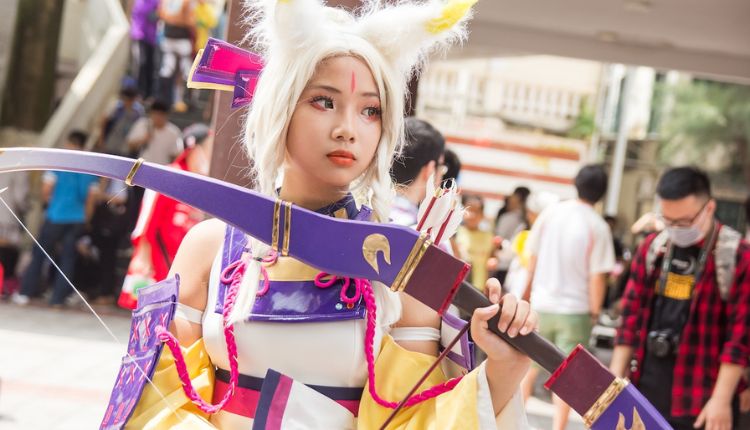Kemomo Unique Digital Culture Phenomenon

Kemomo
Frequently associated with anthropomorphic animal characters that exhibit human dispositions. The word is derived from “kemono,” which means “beast” or “animal” in Japanese, but “kemomo” has taken on its very own identification, regularly representing a stylized or affectionate version of kemono characters.
This virtual and inventive way of life has grown immensely in recognition, spreading beyond Japan into worldwide online groups. Through systems like Twitter, Pixiv, Reddit, and numerous painting forums, kemomo has developed into an innovative culture with committed artists, fans, and storytellers who breathe life into these expressive animal-human hybrids.
Origins and Cultural Background of Kemomo
Contents
- 1 Origins and Cultural Background of Kemomo
- 2 Artistic Styles and Visual Appeal of Kemomo
- 3 Kemomo in Digital Communities and Fandoms
- 4 Storytelling and Character Development in Kemomo Culture
- 5 The Psychological and Emotional Connection to Kemomo
- 6 Commercialization and Merchandising inside the Kemomo Ecosystem
- 7 Differences Between Kemomo and Related Subcultures
- 8 Challenges and Criticism Within the Kemomo Space
- 9 The Future of Kemomo in Digital Culture
- 10 Conclusion
The concept of kemomo finds its roots in Japanese folklore and traditional artwork, wherein anthropomorphic animals frequently played huge roles in myths, parables, and fables. Over time, anime and manga began to comprise these characters in a stylized and creative way. Unlike traditional kemono, which sometimes leans in the direction of sensible animal functions, kemomo has an inclination to be cuter, softer, and regularly extra on hand for a broader audience.
The shift inside the path of kemomo is indicative of approaches to virtual manners of lifestyles that transform conventional archetypes into icons of internet creativity and private expression. As an end result, kemomo has come to be not the most effective style of painting or storytelling, but an instance of community-driven narratives and layout innovation.
Artistic Styles and Visual Appeal of Kemomo
One of the defining capabilities of kemomo is its precise visible aesthetic. Artists who create kemomo characters generally mix human anatomy with first-rate animal talents, which include ears, tails, fur, and paws. These characters are regularly depicted with exaggerated expressions, shiny colors, and stylistic apparel that amplifies their persona.
The kemomo aesthetic is bendy, bearing in mind representations ranging from whimsical and funny to fashionable and dramatic. The popularity of kemomo art may be attributed to its emotional resonance and versatility in storytelling, which invites countless experimentation and engagement from artists and fans alike.
Kemomo in Digital Communities and Fandoms
Online structures play a vast role in shaping the kemomo fandom. Communities on Discord, Twitter (now X), Fur Affinity, and DeviantArt regularly act as hubs for sharing kemonomimi content, discussing person designs, taking part in roleplay, and commissioning artwork.
These spaces permit enthusiasts to connect globally, developing a sense of belonging and shared creativity. Many kemomo fanatics engage in collaborative worldwide construction, in which particular characters (OCs) and narratives are evolved collectively. These groups not handiest assist creative growth; however, additionally foster friendships and cultural exchange, making kemomo a wealthy social phenomenon in addition to an artistic one.
Storytelling and Character Development in Kemomo Culture
Kemomo characters are greater than simply attractive visuals—they regularly have deeply advanced personalities, backstories, and emotional arcs. Writers and artists create complete universes spherical to their kemomo characters, embedding them with relatable struggles, goals, and relationships.
Whether set in myth worlds, sci-fi universes, or slice-of-life situations, kemomo reminiscences are enriched by means of the duality of their animal-human nature, allowing creators to explore subjects together with identity, transformation, alienation, and freedom. This narrative intensity elevates Kemono beyond surface-level fandom, reworking it properly into a valid vehicle for personal storytelling and imaginative fiction.
The Psychological and Emotional Connection to Kemomo
The human fascination with anthropomorphic characters is longstanding, rooted in psychology and the preference to project human feelings onto non-human entities. Kemomo taps into this inclination by presenting characters that can be both acquainted and unique.
Their animal inclinations offer a layer of metaphor, allowing audiences to find out emotions and identities in a symbolic way. For many fanatics, kemomo characters feature emotional companions or idealized selves—avatars through which they might particular suppressed emotions or trade additives of their man or woman. This deep emotional bond frequently results in sturdy fan loyalty and continuous engagement with the Kemono universe.
Commercialization and Merchandising inside the Kemomo Ecosystem
As kemonomimi earns a reputation, it is more and more turning into a marketable concept. Artists and small organizations have all started to capitalize on the kemomo aesthetic via products that consist of plush toys, clothing, stickers, virtual prints, or even NFTs.
Independent creators use systems like Etsy, Gumroad, and Ko-fi to sell kemomo-themed merchandise, often presenting unique characters that enthusiasts grow attached to. This monetization allows artists to sustain their innovative exercise while also increasing the reach of the kemono subculture. The call for custom commissions and terrific content cloth additionally shows that Kemomo has strong economic functionality within the location of interest paintings and fandom markets.
Differences Between Kemomo and Related Subcultures
Kemomo is frequently harassed or associated with different anthropomorphic genres, collectively with furry, kemono, and moe-animal hybrids. However, kemomo distinguishes itself via its stylized, regularly softer format philosophy and its integration with Japanese aesthetic traditions.
While the bushy fandom is extra Western and broader in scope, kemomo stays deeply stimulated by means of manga, anime, and kawaii subculture. The variations lie in tone, creative technique, and community dynamics, with kemono generally supplying characters that emphasize emotional subtlety, innocence, or playful allure. This difference permits kemomo to carve its very own identification, attractive to fans who may not engage with one-of-a-kind anthropomorphic genres.
Challenges and Criticism Within the Kemomo Space
Despite its growing enchantment, the kemomo network is not without its demanding situations. Issues which incorporate creative plagiarism, identification disputes, or misinterpretations of cultural factors sometimes thrust upward. Because kemomo is deeply rooted in Japanese ways of life, there are issues around cultural appropriation or misunderstanding at the same time as tailor-made for global audiences.
Additionally, as kemomo will become extra commercialized, some purists worry about the dilution of its authentic creative reason. Navigating those stressful situations calls for open speech, network moderation, and a shared appreciation for the roots and evolution of kemomo as a creative form.
The Future of Kemomo in Digital Culture
The future of kemomo appears promising due to the fact that the digital artwork landscape continues to increase. With the arrival of AI tools, digital reality, and interactive storytelling structures, kemomo characters are possibly to conform beyond static snapshots and emerge as part of immersive reports.
Virtual YouTubers (VTubers), as an instance, have already started out to include kemomo designs into their avatars, blending live performance with kemono identification. As era and fandom keep intertwining, kemomo stands poised to be at the forefront of innovation, providing new strategies for people to find out identification, emotion, and fantasy through anthropomorphic artwork.
Conclusion
Kemomo is greater than in reality an artwork trend—it’s far more than a mirrored photo of methods of virtual lifestyle that permit people to connect via imagination, emotion, and shared storytelling. It bridges the gap between traditional folklore and the contemporary era, between imaginative individualism and community collaboration.
Whether one is an informal fan, a committed artist, or virtually curious, Kemono gives a welcoming and expressive region that celebrates creativity without borderlines. In a global world in which identity is increasingly fluid and representation is paramount, kemomo presents a canvas for exploring the numerous faces of humanity via the eyes of some aspect of beautifully no longer pretty humans.








